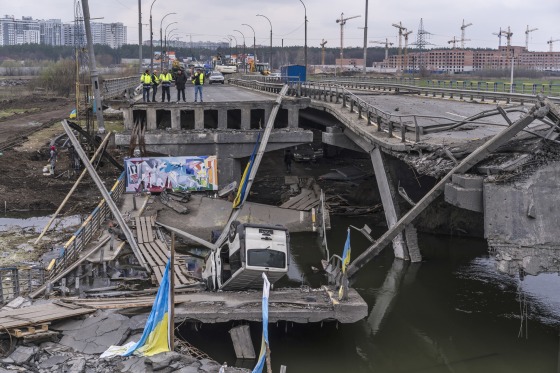IRPIN, Ukraine — An explosives specialist from the Ukrainian military spent an hour crawling on the floor of Andriy Rhyzenko’s bedroom in search of Russian booby traps, combing through his belongings scattered wall-to-wall by occupying forces.
Rhyzenko is a retired Ukrainian naval captain who had trained with NATO forces and in the United States. He and his wife fled Irpin, a suburb of Kyiv that was demolished by the Russians’ assault, in the late afternoon on Feb. 24 — the first day of the war.
His friends in the U.S. government believed he could be a potential Russian target, he said. That remained a concern this past weekend as he returned home and the search for Russian explosives began. One booby trap was recovered in a building across the street, designed to blow when the electricity was switched back on, but Rhyzenko’s home appeared to be safe based on the expert’s search.
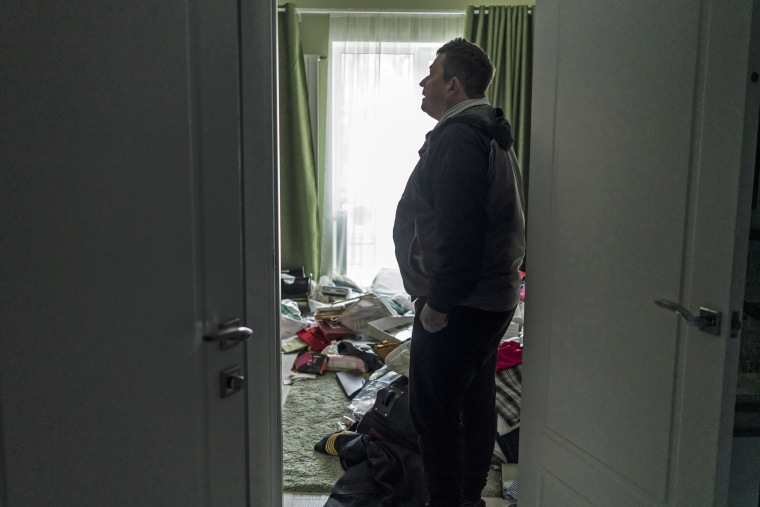
“It’s a bit of shock to see it looted and very emotional,” he said, noting that he bought this home upon selling his parents' house in Crimea, after Russia illegally seized the territory in 2014. “It is awful, but it’s not as bad as some people.”
Many like Rhyzenko are now returning to areas outside Kyiv that were occupied by Russian forces to find out what’s left of their homes, which bear clear evidence of the violence that took place here.
Seventy-one percent of Irpin was damaged by bullets, missiles, explosives and shells under Russian attack and occupation, Mayor Oleksandr Markushyn said earlier this month, citing United Nations satellite imagery. More than 1,060 buildings that included housing and social infrastructure — including four schools and three health care centers — were damaged.
Residents are now contending with this formerly comfortable suburb’s new status as a former battlefield. What the world sees here now may be a glimpse of what cities like Kharkiv, Mariupol, Mykolaiv, Kramatorsk and Donetsk in the country’s east and south are going through as they still suffer under continued Russian fire and shelling.
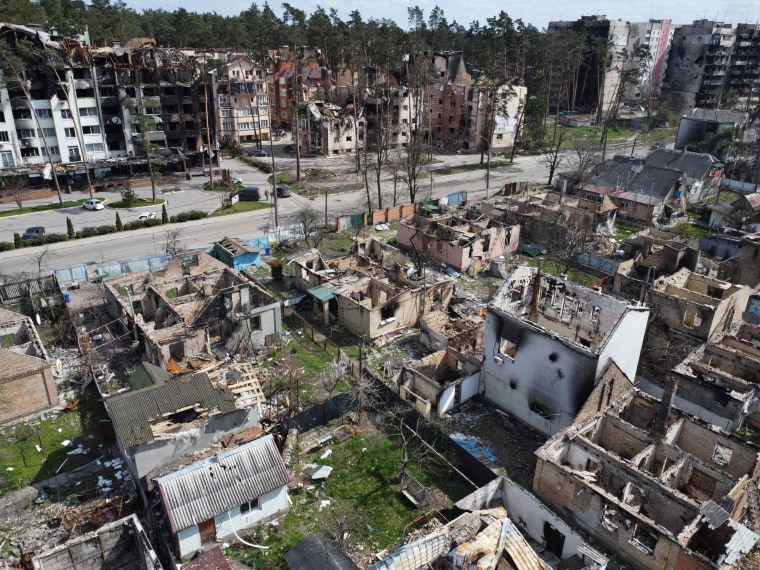
While Russian attacks on this country carry on and thousands of displaced Ukrainians continue to flee homes destroyed in this invasion, residents here face the quiet trauma after a disaster. As they work to pick up the pieces in Irpin, they hope that the Kremlin’s ambitions don’t call for further military attacks.
For now, residents are pushing for stores to reopen and for utilities to get back online. They are even having to fix holes that Russians cut into fences and garages to create shooting positions. And all this is taking place amid craters left by Russian bombs, apartment buildings that are nothing more than burnt shells, and houses that are crumbling bits of cinderblock and brick.
Rebuilding after a battle
Sezhiy Klymach, 73, safely fled the city two weeks after the Russians came. He’d hidden in a basement with his neighbors. The retired municipal worker said he had followed news coverage about Irpin closely, but it was still shocking to see the city he had helped keep running turned to rubble.
Most of his neighbors could be seen sweeping up trash, twisted metal, shattered glass, broken tree limbs, bullet casings and spent explosive shells into piles for garbage pickup. On one street, neighbors shoveled trash into a Russian armored personnel carrier that had been hollowed out in an explosion.
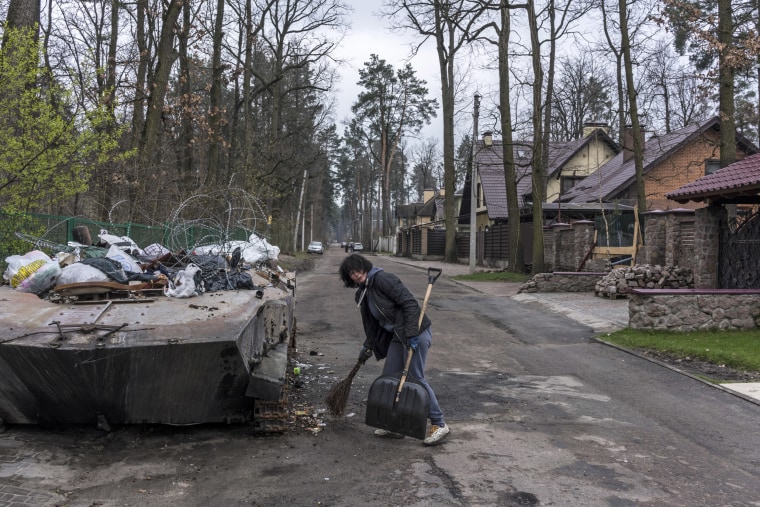
“It’s difficult to see all the destruction of the city,” Klymach said, wiping a tear from his eye. “I hope more people will come back to rebuild.”
Even in the best of circumstances, many returned home to find the Russians had torn out drawers, tossed clothes, ripped books, shattered pictures and strewn everything they could find across the floor of residences here. Many had lost valuables.
In Rhyzenko’s house, the mattress was upended, and jewelry, thousands of dollars in cash, all their American brand shoes and numerous bottles of wine were gone. Russian troops had painted a “Z” on a Columbia-brand hiking boot.
A career’s worth of military pins and collectors coins that Rhyzenko had kept from his time at NATO had disappeared along with the binoculars his father had given him from his time in the Soviet Navy. The ransackers did leave behind Rhyzenko’s replica model of the Russian ship Moskva, however, which sank after being hit by at least one Ukrainian missile.
“They missed something important here,” he quipped. “This is a piece of history since it is underwater.”
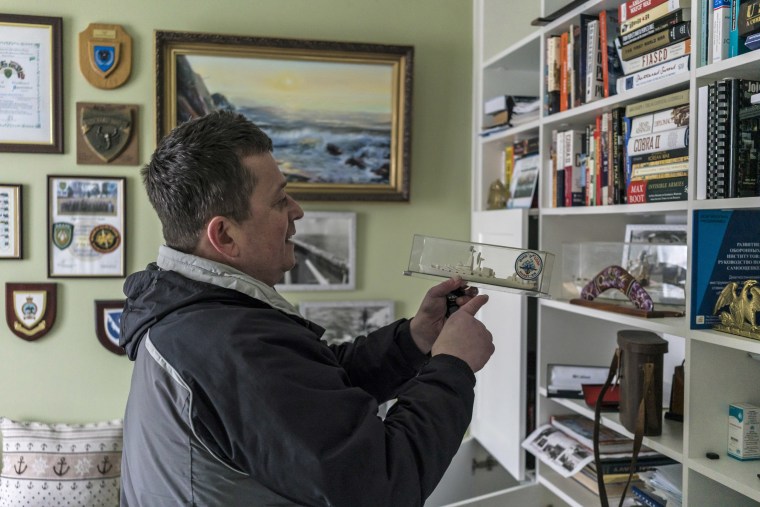
While the Moskva sinking is a symbol of Ukrainian victory, the main route to safety in and out of Irpin has become a symbol of Ukrainian resilience. Many hid under the main bridge connecting Irpin to Kyiv during bombings. After it was destroyed, hundreds — if not thousands — of Ukrainians, including elderly and disabled people helped by volunteers, scrambled across rubble and planks of wood to evacuate to the safety of Kyiv.
A temporary road has since been built alongside the destroyed bridge, reconnecting Irpin with the Ukrainian capital. Municipal employees had already cleared the area of destroyed vehicles, moving their frames to a nearby parking lot where owners could identify them.
Windshields and car doors were riddled with rounds of bullets, the roofs of many were crushed, and windows of some had turned to melted glass, likely from the heat of explosions. A travel coffee mug still sat in the cupholder of a black sedan that appeared to have an exploded engine. A pair of pink children’s sunglasses could be seen in the open glovebox of a silver car with bullet holes in the windshield.
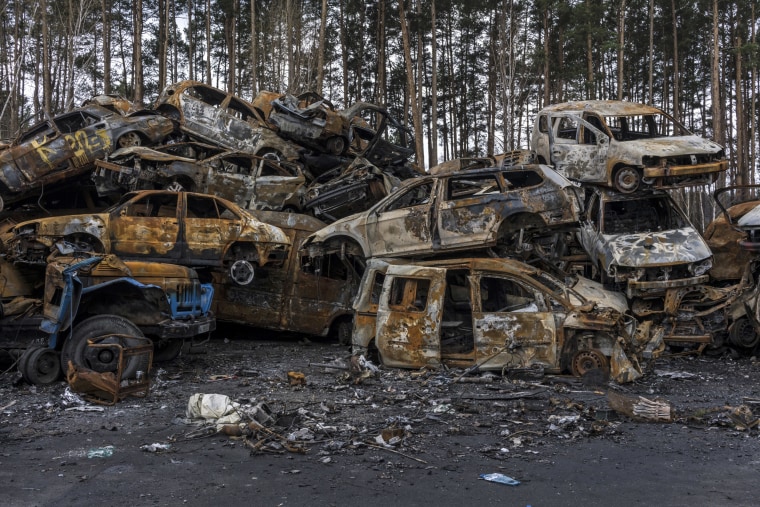
The car graveyard means the streets are now clear and rebuilding of this community continues. Still, everything remains a challenge, even providing basic services or food.
Last week, Irpin Mayor Markushyn asked people to come to the city to sell food and housing supplies in tents near the city center. It became a small street market selling eggs, cheese, meat, bread, flour, coffee, honey, nuts, jams and dried fruit on small folding tables. Others sold everything from shoes and underwear to wallpaper, brooms, trash bags and toilet paper.
At the market, Igor Krichtatovitch, 76, a scientist who spent years living in Seattle before retiring here, said it had been difficult to buy food in recent weeks. But some crucial services had returned. After spending weeks in the basement with his family, he said they had finally gotten water back and, most crucially, cellphone service.
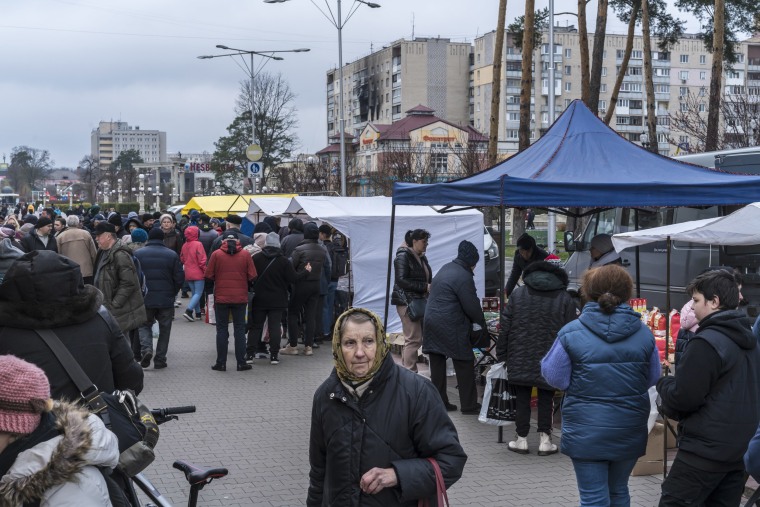
Under Russian occupation, he had been unable to call his daughter and tell her that he and her mother were safe, even though “all kinds of weapons, guns, heavy artillery and demolition was just 70 yards from our home” and firing 18 hours per day.
“The biggest relief is silence,” Krichtatovitch said.
Still, it remains unclear when electricity could return, making life very difficult in the middling temperatures of the Ukrainian spring. There was hope it could be restored in May, but some predicted it could be as late as June.
For Rhyzenko and his wife, that means they won’t be staying in their home for the foreseeable future, even after cleaning up.
“We will try to find an apartment or something in Kyiv for now,” he said. “I think maybe life will come back — more or less.”
